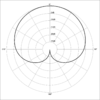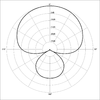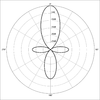Most microphones today use electromagnetic induction (dynamic microphones), capacitance change (condenser microphones) or piezoelectricity (piezoelectric microphones) to produce an electrical signal from air pressure variations. Microphones typically need to be connected to a preamplifier before the signal can be amplified with an audio power amplifier or recorded.
Condenser
Electrostatic
Capacitor
DC-Biased
Dynamic
Ribbon
Carbon
Piezo
Fiber-Optic
Laser
Liquid
MEMS
Speakers
Noise Cancelling
Contact
Parabola
Wireless
Throat
Lavaliers
Microphone polar patterns
Some microphone designs combine several principles in creating the desired polar pattern. This ranges from shielding (meaning diffraction/dissipation/absorption) by the housing itself to electronically combining dual membranes.
Schematic: https://www.sparkfun.com/datasheets/BreakoutBoards/Amplified-Mic-Electret-v14.pdf
Data/Calabrate: http://dlnmh9ip6v2uc.cloudfront.net/datasheets/Sensors/Sound/CEM-C9745JAD462P2.54R.pdf







No comments:
Post a Comment